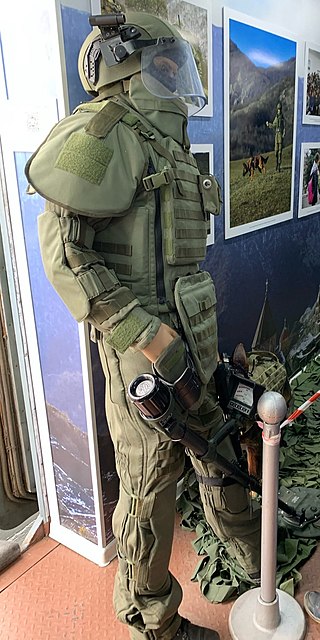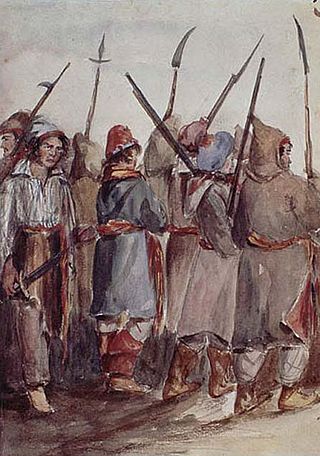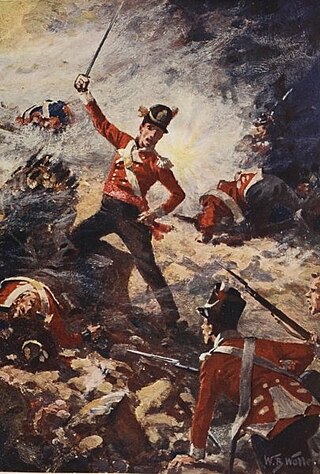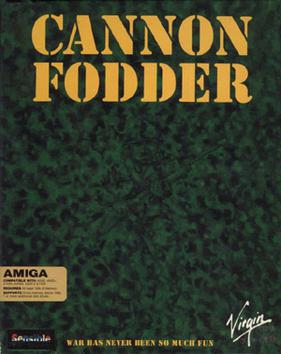Related Research Articles

Artillery are ranged weapons that launch munitions far beyond the range and power of infantry firearms. Early artillery development focused on the ability to breach defensive walls and fortifications during sieges, and led to heavy, fairly immobile siege engines. As technology improved, lighter, more mobile field artillery cannons developed for battlefield use. This development continues today; modern self-propelled artillery vehicles are highly mobile weapons of great versatility generally providing the largest share of an army's total firepower.

A battle is an occurrence of combat in warfare between opposing military units of any number or size. A war usually consists of multiple battles. In general, a battle is a military engagement that is well defined in duration, area, and force commitment. An engagement with only limited commitment between the forces and without decisive results is sometimes called a skirmish.

A human wave attack, also known as a human sea attack, is an offensive infantry tactic in which an attacker conducts an unprotected frontal assault with densely concentrated infantry formations against the enemy line, intended to overrun and overwhelm the defenders by engaging in melee combat. The name refers to the concept of a coordinated mass of soldiers falling upon an enemy force and sweeping them away with sheer weight and momentum, like an ocean wave breaking on a beach.

In military terminology, friendly fire or fratricide is an attack by belligerent or neutral forces on friendly troops while attempting to attack enemy/hostile targets. Examples include misidentifying the target as hostile, cross-fire while engaging an enemy, long range ranging errors or inaccuracy. Accidental fire not intended to attack enemy/hostile targets, and deliberate firing on one's own troops for disciplinary reasons, is not called friendly fire, and neither is unintentional harm to civilian or neutral targets, which is sometimes referred to as collateral damage. Training accidents and bloodless incidents also do not qualify as friendly fire in terms of casualty reporting.

A sapper, also called a combat engineer, is a combatant or soldier who performs a variety of military engineering duties, such as breaching fortifications, demolitions, bridge-building, laying or clearing minefields, preparing field defenses, and road and airfield construction and repair.

An airstrike, air strike, or air raid is an offensive operation carried out by aircraft. Air strikes are delivered from aircraft such as blimps, balloons, fighter aircraft, attack aircraft, bombers, attack helicopters, and drones. The official definition includes all sorts of targets, including enemy air targets, but in popular usage the term is usually narrowed to a tactical (small-scale) attack on a ground or naval objective as opposed to a larger, more general attack such as carpet bombing. Weapons used in an airstrike can range from direct-fire aircraft-mounted cannons and machine guns, rockets and air-to-surface missiles, to various types of aerial bombs, glide bombs, cruise missiles, ballistic missiles, and even directed-energy weapons such as laser weapons.

Killed in action (KIA) is a casualty classification generally used by militaries to describe the deaths of their own personnel at the hands of enemy or hostile forces at the moment of action. The United States Department of Defense, for example, says that those declared KIA did not need to have fired their weapons, but only to have been killed due to hostile attack. KIAs include those killed by friendly fire in the midst of combat, but not from incidents such as accidental vehicle crashes, murder or other non-hostile events or terrorism. KIA can be applied both to front-line combat troops and to naval, air and support troops.

Cannon Fodder is a series of war themed action games developed by Sensible Software, initially released as Cannon Fodder for the Commodore Amiga. Only two games in the series were created by Sensible, but were converted to most active systems at the time of release. A sequel, Cannon Fodder 2, was released in 1994 for Amiga and DOS. A third game, Cannon Fodder 3, was made by a Russian developer and released in English in 2012.

Irregular military is any non-standard military component that is distinct from a country's national armed forces. Being defined by exclusion, there is significant variance in what comes under the term. It can refer to the type of military organization, or to the type of tactics used. An irregular military organization is one which is not part of the regular army organization. Without standard military unit organization, various more general names are often used; such organizations may be called a troop, group, unit, column, band, or force. Irregulars are soldiers or warriors that are members of these organizations, or are members of special military units that employ irregular military tactics. This also applies to irregular infantry and irregular cavalry units.

Shock troopers or assault troopers are formations created to lead an attack. They are often better trained and equipped than other infantry and expected to take heavy casualties even in successful operations.

The Six Days Campaign was a final series of victories by the forces of Napoleon I of France as the Sixth Coalition closed in on Paris.

A forlorn hope is a band of soldiers or other combatants chosen to take the vanguard in a military operation, such as a suicidal assault through the kill zone of a defended position, or the first men to climb a scaling ladder against a defended fortification, or a rearguard, to be expended to save a retreating army, where the risk of casualties is high. Such men were volunteers motivated by the promise of reward or promotion, or men under punishment offered pardon for their offenses, if they survived.

Cannon Fodder 2: Once More unto the Breach, or simply Cannon Fodder 2, is an action-strategy shoot 'em up game developed by Sensible Software and published by Virgin Interactive for the Amiga and DOS in November 1994. The game is the sequel to Cannon Fodder, a successful game released for multiple formats in 1993. The game is a combination of action and strategy involving a small number of soldiers battling through a time-travel scenario. The protagonists are heavily outnumbered and easily killed. The player must rely on strategy and heavy secondary weapons to overcome enemies, their vehicles and installations.

The Battle of Chiari was fought on 1 September 1701 during the War of the Spanish Succession. The engagement was part of Prince Eugene of Savoy's campaign to seize the Spanish controlled Duchy of Milan in the Italian peninsula, and had followed his victory over Marshal Catinat at the Battle of Carpi in July. Marshal Villeroi replaced Catinat as commander of the Franco–Spanish–Savoyard forces in the theatre, carrying with him orders from King Louis XIV to push the Imperialists out of Italy.

Sapping is a term used in siege operations to describe the digging of a covered trench to approach a besieged place without danger from the enemy's fire. The purpose of the sap is usually to advance a besieging army's position towards an attacked fortification. It is excavated by specialised military units, whose members are often called sappers.
Eustache Charles Joseph d'Aoust was a general officer during the French Revolutionary Wars.

Cannon Fodder is a shoot 'em up developed by Sensible Software and published by Virgin Interactive Entertainment for the Amiga in 1993. Virgin ported the game to MS-DOS, the Atari ST and the Acorn Archimedes, as well as the Atari Jaguar, Mega Drive, SNES and 3DO. The game is military-themed and based on shooting action with squad-based tactics. The player directs troops through numerous missions, battling enemy infantry, vehicles and installations.

The twelfth siege of Gibraltar was fought between September 1704 and May 1705 during the War of the Spanish Succession. It followed the capture in August 1704 of the fortified town of Gibraltar, at the southern tip of Spain, by an Anglo–Dutch naval force led by Sir George Rooke and Prince George of Hesse-Darmstadt. The members of the Grand Alliance, the Holy Roman Empire, England, the Netherlands, Pro-Habsburg Spain, Portugal and Savoy, had allied to prevent the unification of the French and Spanish thrones by supporting the claim of the Habsburg pretender Archduke Charles VI of Austria as Charles III of Spain. They were opposed by the rival claimant, the Bourbon Philip, Duke of Anjou, ruling as Philip V of Spain, and his patron and ally, Louis XIV of France. The war began in northern Europe and was largely contained there until 1703, when Portugal joined the confederate powers. From then, English naval attentions were focused on mounting a campaign in the Mediterranean to distract the French navy and disrupt French and Bourbon Spanish shipping or capture a port for use as a naval base. The capture of Gibraltar was the outcome of that initial stage of the Mediterranean campaign.
The term kill chain is a military concept which identifies the structure of an attack. It consists of:

The Battle of Guisa was a relevant event in the history of Cuba. One of the major victories of the Rebel Army in the Liberation War (1956-1958) sustained against the dictatorship of Fulgencio Batista in Cuba.
References
- ↑ See, e.g., "American Heritage Dictionary of the English Language". education.yahoo.com. Yahoo! Search. Archived from the original on 2011-06-06.
- ↑ (in French) "De Buonaparte et des Bourbons" — full text in the French Wikisource.
- ↑ "Blind Rosa by Henkirk Conscience (1854) - early use of term "cannon fodder"". Janesville Daily Gazette. 1854-03-18. p. 1. Retrieved 2019-10-08.
- ↑ "Russia & Finland - early use of term "cannon fodder"". The Morning Chronicle. 1861-05-08. p. 5. Retrieved 2019-10-08.
- ↑ How World War I gave us 'cooties', Jonathan Lighter, cnn.com, June 25, 2014. Accessed on line July 20, 2015.
- ↑ Woods, David P. (August 30, 2016). "Did Rex Ryan's joke about using players as 'cannon fodder' go too far?". Score Media and Gaming . Retrieved November 16, 2022.
It's undeniable that NFL teams allow players they don't plan to keep on the final roster to be subjected to extra punishment in training camp and the preseason. There's a term for it: "camp body." The practice helps keep a team's best players healthy for the season.